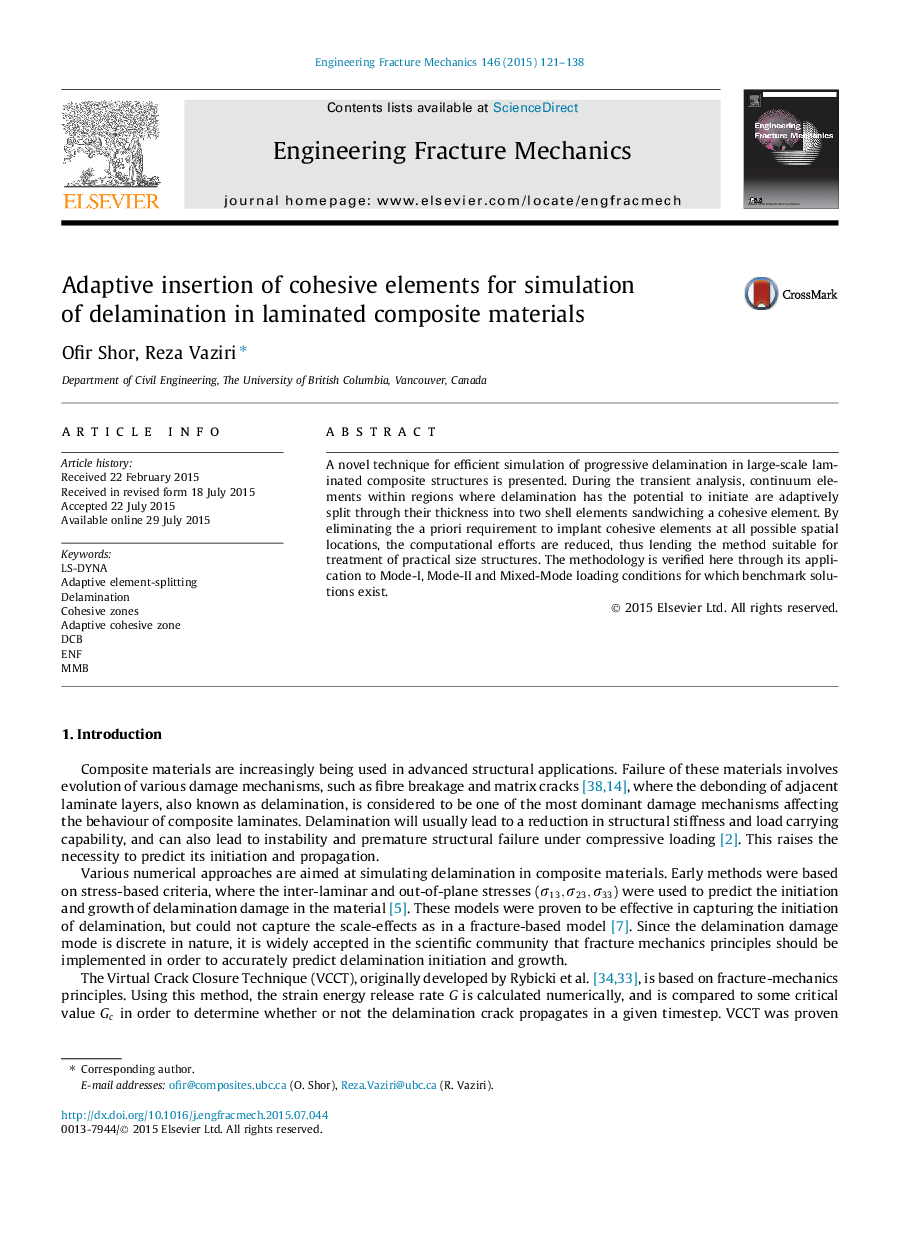| Article ID | Journal | Published Year | Pages | File Type |
|---|---|---|---|---|
| 766411 | Engineering Fracture Mechanics | 2015 | 18 Pages |
•A novel technique for simulating delamination in composites is presented.•Using this method, continuum elements are adaptively split through their thickness.•Cohesive elements are adaptively seeded along the newly created interfaces.•The method allows delamination to propagate within the structure adaptively.•The method is verified for Mode-I, Mode-II and Mixed-Mode loading conditions.
A novel technique for efficient simulation of progressive delamination in large-scale laminated composite structures is presented. During the transient analysis, continuum elements within regions where delamination has the potential to initiate are adaptively split through their thickness into two shell elements sandwiching a cohesive element. By eliminating the a priori requirement to implant cohesive elements at all possible spatial locations, the computational efforts are reduced, thus lending the method suitable for treatment of practical size structures. The methodology is verified here through its application to Mode-I, Mode-II and Mixed-Mode loading conditions for which benchmark solutions exist.
